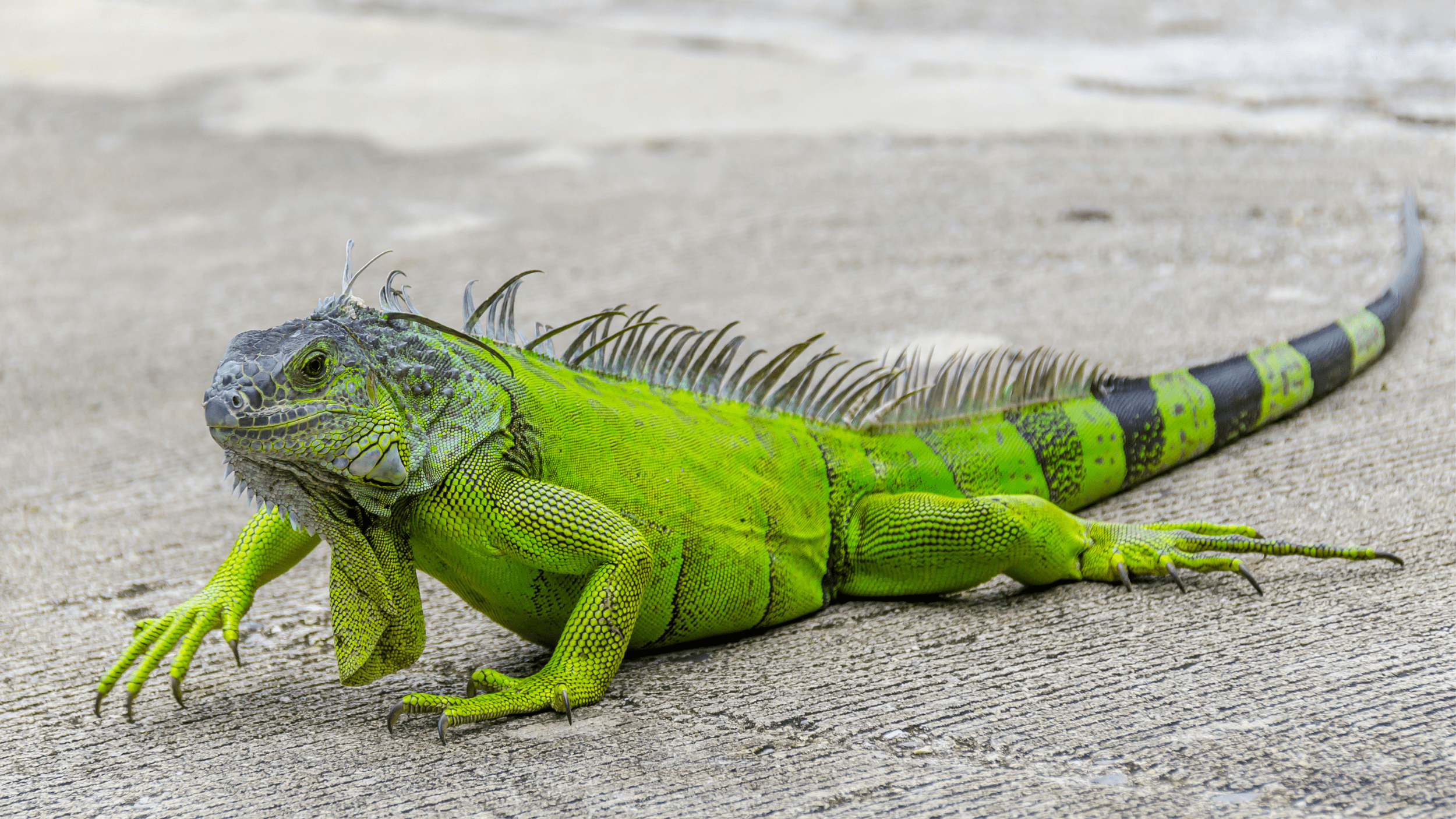
Green iguanas
(Iguana iguana)
Green iguanas are fascinating reptiles that share certain characteristics with their close relatives, the common iguanas. However, they possess distinct features that set them apart. With their vibrant green coloration and impressive size, green iguanas are truly captivating creatures. Let’s explore more about these remarkable reptiles.
Green iguanas are native to the tropical regions of Central and South America, where they thrive in warm and humid environments. They have a unique ability to adapt to various habitats, ranging from rainforests and savannas to coastal areas and even urban landscapes. As diurnal reptiles, they are most active during the day, basking in the sun to regulate their body temperature.
One of the most striking physical characteristics of green iguanas is their large size. Males can reach lengths of up to 6 feet (1.8 meters) from head to tail, while females are slightly smaller. Their bodies are elongated and muscular, with strong limbs equipped for climbing and grasping. Green iguanas also possess a long, whip-like tail that aids in balance and defense against predators.
True to their name, green iguanas display vibrant green coloration, which serves as excellent camouflage in their natural habitats. However, their color can vary depending on factors such as age, sex, and environmental conditions. Juveniles often exhibit more vivid green hues, while adult males may develop orange or brown markings during the breeding season.
These herbivorous reptiles have a specialized diet primarily consisting of leaves, fruits, flowers, and other plant matter. They possess sharp, serrated teeth designed for efficiently consuming vegetation. Green iguanas are known for their browsing behavior, often feeding on a variety of plants to meet their nutritional needs. Their efficient digestive system enables them to extract nutrients from tough plant fibers.
Green iguanas are exceptional climbers and spend a significant amount of time in trees, utilizing their sharp claws and powerful limbs to navigate their arboreal habitats. They are capable of leaping from branches and landing gracefully, showcasing their agility. In addition to trees, green iguanas can be found near bodies of water, as they are skilled swimmers and may dive into rivers or lakes to escape predators.
As social animals, green iguanas may congregate in groups called aggregations, especially during mating seasons. Dominant males establish territories and engage in territorial displays to ward off rivals. Females typically lay their eggs in burrows dug in sandy soil, and after an incubation period of several months, the hatchlings emerge.
While green iguanas are generally docile, they may exhibit defensive behavior when threatened. They have sharp teeth and strong jaws, which they can use in self-defense if necessary. However, with proper handling and socialization, they can become tame and even form bonds with their human caregivers.
It is worth noting that in regions where green iguanas have been introduced as invasive species, they can have a significant impact on local ecosystems. They have been known to outcompete native species for resources and damage vegetation in certain areas.
To ensure the well-being of green iguanas, it is essential to provide them with appropriate enclosures that mimic their natural habitat. This includes ample space for climbing, basking areas with heat and UVB lighting, and a varied diet consisting of fresh vegetables and fruits. If considering a green iguana as a pet, it is crucial to research their care requirements and consult with experienced reptile enthusiasts or veterinarians.
In conclusion, green iguanas are captivating reptiles with their vibrant green coloration, impressive size, and arboreal lifestyle. Their ability to adapt to diverse environments and their unique feeding habits make them a truly remarkable species. However, it is important to understand their specific needs and potential ecological impact to ensure their well-being in both their native habitats and captivity.

